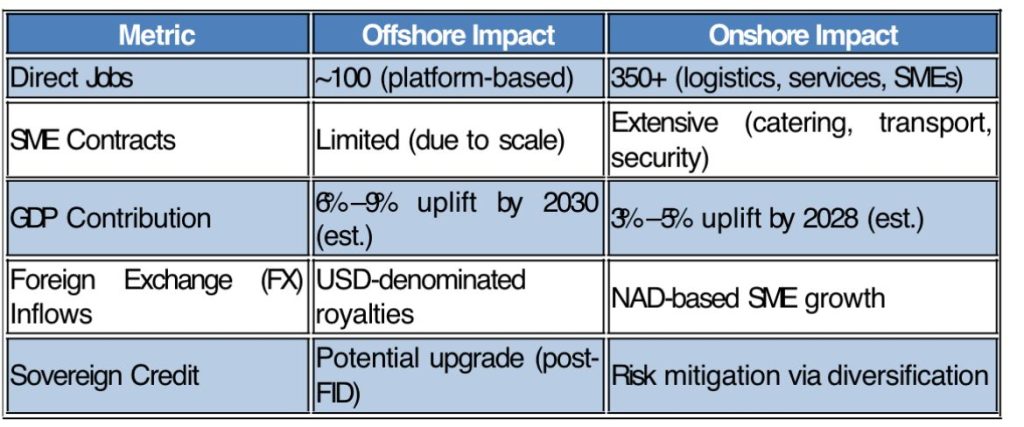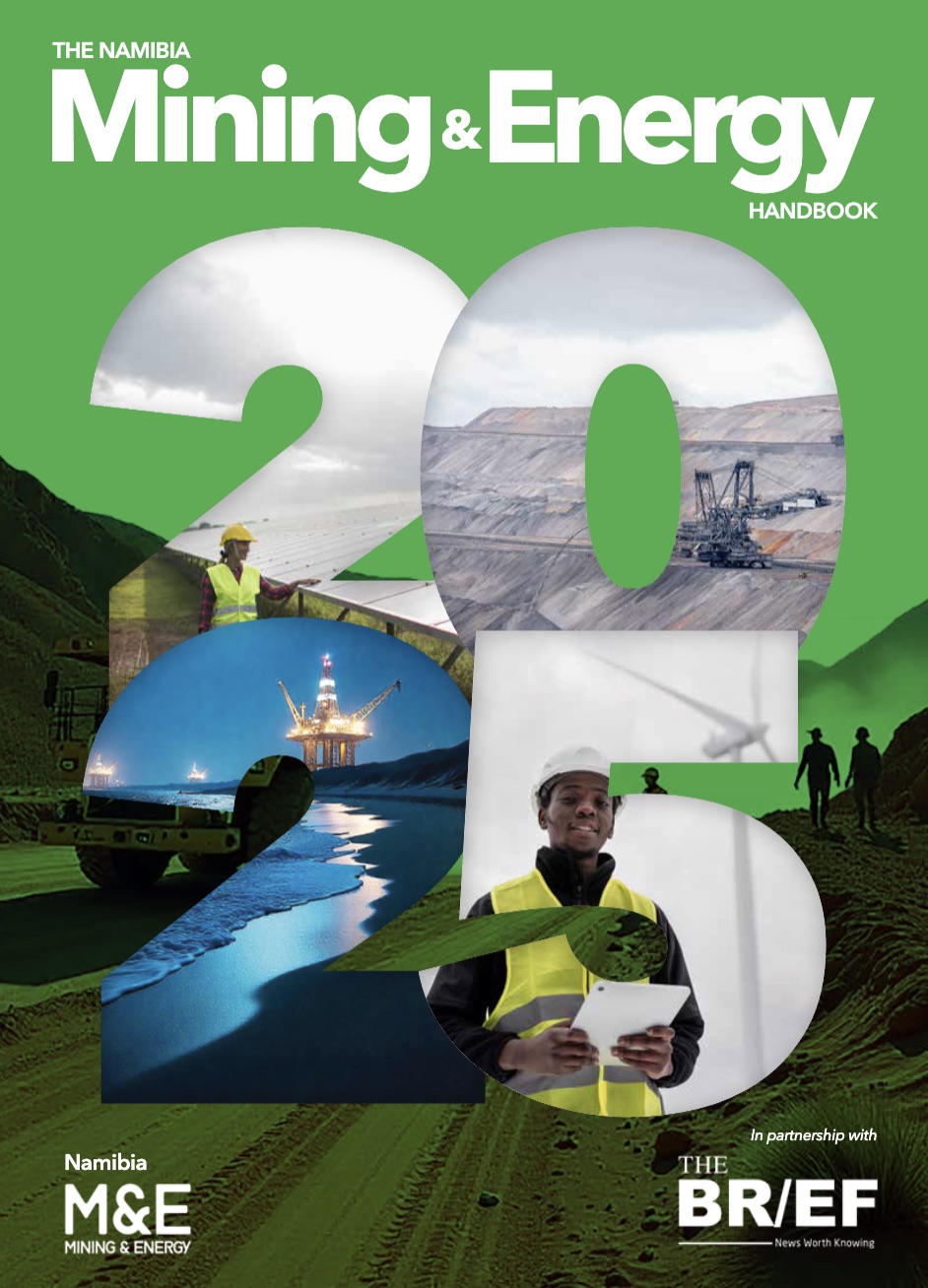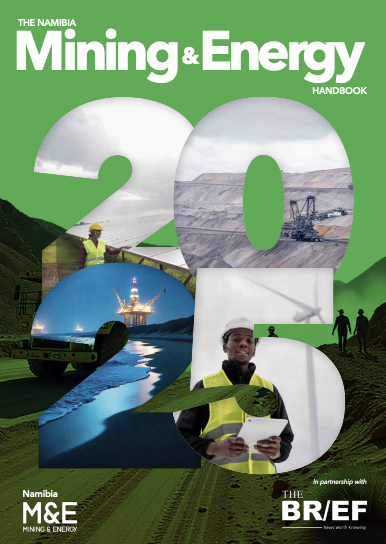
By Kovimariva Mungunda
“2026 to 2032 will not be business as usual in Namibia, given the accelerating pace of the energy sector.”
As the Namibia Local Content Conference (NLCC 2025) approaches, it’s time to confront a reality that remains underdiscussed: upstream success will fundamentally reshape how Namibia operates, regulates, upskills, and partners. This is not just a sectoral shift—it’s a national inflection point.
Namibia stands at the precipice of a generational transformation. With TotalEnergies, ReconAfrica, and Impact Oil & Gas advancing exploration in the Orange Basin and Kavango regions. But success in both offshore and onshore petroleum exploration demands more than celebration. It requires strategic readiness across legal, geopolitical, economic, environmental, and infrastructure domains. This is not just about hydrocarbons—it’s about Namibia’s sovereign trajectory.
Geopolitical Leverage in a Transitioning World
Namibia’s dual-track energy strategy—embracing both renewables and petroleum—positions it as a geopolitical swing state in the global energy transition. Offshore success in Blocks 2912 and 2913B has already attracted majors like TotalEnergies, QatarEnergy, and Shell. Onshore, ReconAfrica’s Kavango Basin activities signal untapped potential.
Energy Diplomacy: Namibia must balance petroleum ambitions with climate commitments. Light sweet crude could serve as a transition fuel—supporting regional manufacturing and lowering the cost of renewables.
Strategic Risk: A mixed energy supply invites scrutiny. Namibia must articulate a coherent energy narrative aligned with Sustainable Development Goals (SDGs), AU Agenda 2063, and COP28 commitments.
Legal Architecture
Namibia’s legal framework must evolve from reactive to anticipatory. The Local Content Policy, Gas Bill, and proposed Midstream Act must be harmonized to address:
Cross-border taxation and royalties
Litigation risk in joint ventures
Environmental liability and carbon accounting
Investor protection vs. national interest
Economic Outlook: GDP, FX, and Sovereign Credit

Strategic Note: NDP6 must integrate petroleum sector modeling with fiscal buffers. A Sovereign Petroleum Fund—modeled after Norway’s Government Pension Fund Global (GPFG)—could stabilize FX volatility and fund infrastructure.
Tier 1 Financial Considerations
FX Exposure: USD inflows from offshore royalties could strengthen the NAD but risk inflationary pressure if not sterilized. Central Bank coordination will be key.
Credit Ratings: Moody’s and S&P could revise Namibia’s sovereign outlook upward post-Final Investment Decision, contingent on fiscal discipline and governance.
Midstream Logistics: Namibia must develop pipeline corridors, strategic reserves, and refining capacity to avoid bottlenecks and maximize value retention.
Investor Sentiment: ESG compliance, political stability, and legal clarity will shape risk perception. Namibia must maintain transparency and uphold international standards.
Infrastructure: Engineering Readiness, Not Shock
Namibia’s infrastructure is not yet calibrated for dual petroleum success.
Offshore Needs: Port upgrades (Walvis Bay), subsea cable logistics, Floating Production, Storage, and Offloading (FPSO) docking capacity
Onshore Needs: Road reinforcement (Kavango), water supply systems, emergency response units
Midstream Gaps: No integrated pipeline corridor, limited refining capacity, no strategic reserves
Gamechanger: A phased Energy Corridor Masterplan linking Kavango to Walvis Bay via rail and pipeline could unlock regional trade, reduce transport costs, and attract midstream investors.
Environmental Stewardship
Namibia’s recent offshore Environmental Impact Assessment by TotalEnergies (Sept 2025) sets a precedent. But onshore assessments remain pending.
Best Practice: Adopt International Finance Corporation‘s (IFC) Performance Standards and Equator Principles for all new projects
Carbon Strategy: Mandate carbon intensity disclosures and offset mechanisms
Biodiversity Risk: Kavango Basin overlaps with sensitive ecosystems—require cumulative impact assessments
Market Outlook: Namibia’s Energy Horizon

“Namibia’s Energy Moment Must Be Engineered, Not Assumed”
Success in upstream exploration is not automatic—it must be architected. Namibia’s energy moment demands financial discipline, legal foresight, infrastructure readiness, and inclusive governance. If executed strategically, this could be the most transformative decade in Namibia’s post-independence history.
* Kovimariva Mungunda is an Energy & Finance Analyst.







